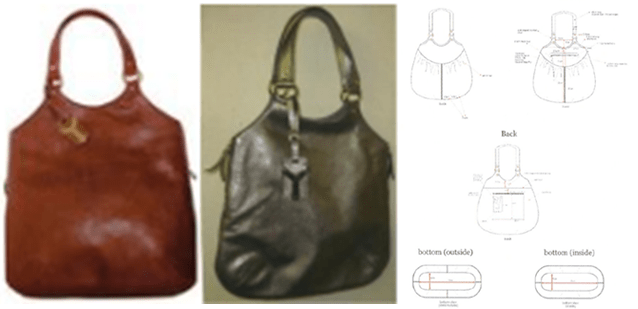Alexandra Brodie
Partner
IP Litigation
Article
3

H&M was unsuccessful before the Office for Harmonization in the Internal Market's (OHIM's) Opposition Division and Board of Appeal and so appealed to the General Court.
Whether a design has individual character is determined by the overall impression that it produces on the informed user. The Board of Appeal characterised the informed user here as "an informed woman, who is interested, as a possible user, in handbags". Neither of the parties challenged this definition, and the General Court apparently approved it, albeit rather unclearly.
It can be contrasted with the definition adopted in a High Court decision of Mr Justice Floyd in relation to a Jimmy Choo handbag design (J Choo (Jersey) Limited v. Towerstone Limited and others [2008] EWHC 346 (Ch)). In Floyd J's view, the informed user would be "someone with a knowledge of handbag design; not the woman in the street, not a handbag designer".
The greater the designer's freedom in developing a design, the less likely it is that minor differences between designs will be sufficient to produce different overall impressions on an informed user. The court approved the Board of Appeal's finding that in the context of fashion items like handbags, the designer's degree of freedom is high. This is not by itself determinative in the assessment of the individual character of a design, however, it is a factor which has to be taken into consideration in that assessment.
The court agreed with the Board of Appeal's finding that the two sets of designs created different overall impressions on the informed user, focusing in particular on three features of each, namely their respective overall shape, structure and surface finish.
In the case of the YSL designs, the court held that the overall impression was of a bag design characterised by classic lines and a formal simplicity whereas the H&M design gave an impression of a more "worked" bag. The court also emphasised that the manner in which the bag represented by the design is used is relevant to the assessment of the overall impression produced on the informed user. The YSL design represented a bag to be carried solely by hand, whereas the earlier design represented a bag to be carried on the shoulder.
NOT LEGAL ADVICE. Information made available on this website in any form is for information purposes only. It is not, and should not be taken as, legal advice. You should not rely on, or take or fail to take any action based upon this information. Never disregard professional legal advice or delay in seeking legal advice because of something you have read on this website. Gowling WLG professionals will be pleased to discuss resolutions to specific legal concerns you may have.